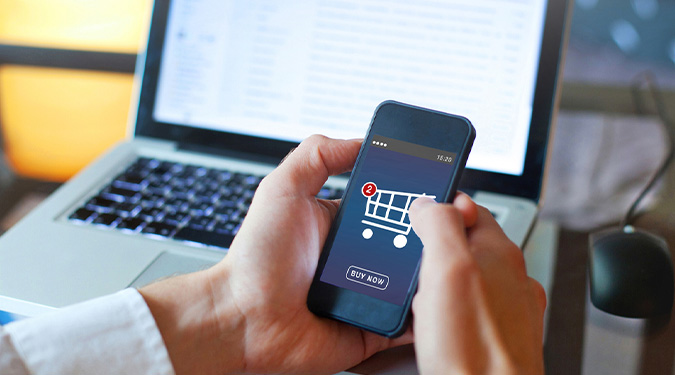Table of Contents
Digital selling has fast become a core channel for B2B sales – and it will only accelerate as companies continue to invest in their eCommerce capabilities. A survey by McKinsey revealed that 65% of B2B companies had eCommerce offerings in 2022, a jump from 53% in early 2021. Forrester predicts B2B eCommerce sales will be more than $2.3T in 2024, exceeding $3T by 2027.
As eCommerce increasingly captures a larger portion of customer spend, companies must explore strategies that will help them stand out from the pack.
Mary Vigil, Digital Commerce Operations Leader at Waters Corporation, a leading provider of lab equipment, supplies and software who uses SAP eCommerce solutions, gives this expert business perspective on eCommerce strategy:
“If you’re not having these conversations, I guarantee your competitors are. You need to be the easiest person to buy from – otherwise you’ll lose business.”
As B2B companies’ success becomes more tethered to the effectiveness of their eCommerce strategies, they must consider how to craft a forward-thinking B2B eCommerce plan that not only positions the organization above its competitors, but also fosters future growth and extracts ongoing value from innovation.
1. Understand the B2B eCommerce landscape
The first step is to understand where B2B eCommerce is now and where it is headed moving forward.
eCommerce platforms such as SAP Commerce Cloud offer an increasingly sophisticated, functionally rich and flexible set of digital selling capabilities.
With eProcurement solutions advancing on the same path toward digitization, sales executives and buyers are increasingly transacting via digital channels across a wide range of tactical to strategic purchases.
The main challenge lies within the intersection of eCommerce and eProcurement systems. Using custom interfaces between supplier and buyer platforms can reduce adaptability and often fails to provide the smooth, unified experience users expect.
To remain the “easiest person to buy from”, B2B businesses must take a proactive (rather than reactive) approach to creating a seamless flow of data and documents between these systems.
2. Reach your buyers where they are
A future-proof eCommerce strategy requires the B2B business to proactively understand the purchasing needs, priorities, and practices of existing and prospective buyers. A fundamental goal of any eCommerce strategy is to create and maintain seamless interactions at all stages of the buying process, across all lines, and as requirements change.
That means understanding end-to-end business processes across all customers to ensure the eCommerce and eProcurement systems are speaking the same language.
3. Create a platform for agile, scalable growth
An eCommerce strategy should simplify business decisions, and most importantly, technology should support change, not limit it.
eCommerce capabilities must flex and scale as the customer base grows and business needs change. Digital success depends on the ability to accommodate technology-driven change, such as platform upgrades, with minimal cost and business disruption.
4. Partner with a specialized software provider for agility now and in the future
Partnering with a specialized software provider like TradeCentric enables businesses to focus on reaching buyers where they are, while simultaneously providing the agility to enhance eCommerce strategies at pace.
TradeCentric offers the only purpose-built Integration Platform as a Service (iPaaS) for B2B eCommerce, a seamless integration platform that manages multiple one-to-one eCommerce to eProcurement integrations.
Where taking on a new buyer or implementing an eCommerce platform upgrade would normally involve changes to potentially hundreds of individual buyer connections, the TradeCentric iPaaS replaces this requirement with a single integration platform.
B2B eCommerce integration is TradeCentric’s core competency. In an ecosystem where success is inherently tied to in-depth technical expertise, experience, and resources, TradeCentric enables integration of virtually any combination of leading technologies and languages efficiently so companies can meet their short- and long-term goals.
What next?
To learn how TradeCentric can establish the futureproof B2B eCommerce strategy you need, and to continue the conversation, visit TradeCentric’s profile on the SAP Store or email [email protected].




